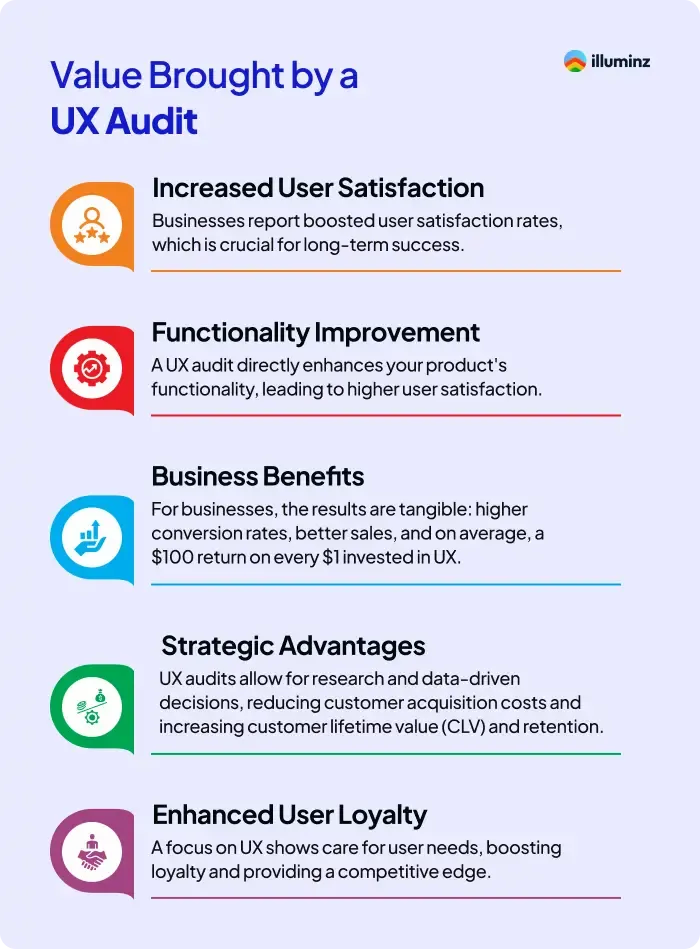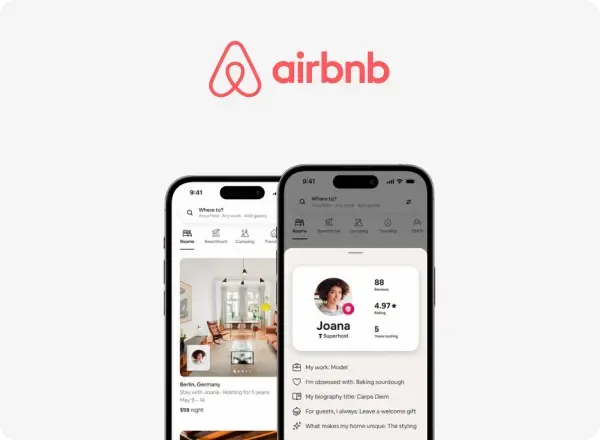Imagine you're running a popular fashion site. Every day, tons of people come to shop for the latest styles. They find things they love and add them to their cart, but then, surprisingly, many just leave without buying.
It makes you wonder, what's stopping them? Is there something on your site that could be better? Maybe it's a small fix, or perhaps it needs a big change.
What causes abandoned carts in eComm, is it related to the products or does the website need a fix?
If so, what kind of fix- a small or a major revamp?
Perhaps a UX audit is the solution.
User experience is crucial for any business, as it has the power to either significantly boost or detrimentally affect a company's success. But how can we ensure that users are guided to take the actions we desire, such as clicking through or moving in a specific direction on our platform? For insightful strategies and expert advice, I highly recommend checking out this amazing podcast by Paul Boag. Dive into the world of user experience design and learn how to effectively engage your audience.
What is a UX Audit?
A UX audit is a health check for your website or app. It detects user interaction gaps on the platform.
The only job left after that was ‘to bridge the gap’.
Sounds easy, doesn't it?
However, the crucial part is how quickly and efficiently are you able to bridge the gap.
The Essential Role of UX Audits
Here are some examples of what a bad UX can do for the website
- A mere 3-second delay in page load can drive away over 40% of visitors.
- 5x more likely to abandon a site that isn't mobile-friendly.
- A single poor user experience can cause 32% of loyal customers to leave a brand they previously loved.
- 39% of users disengage from websites with slow or non-loading images.
But when to Conduct a UX Audit:
It's clear by now how critical a UX audit is for a website, platform, or app.
But when to flag for a UX audit, here are the indicators:
1- At any point, to reveal the unseen
Think of it as a regular health checkup!
Even when everything seems fine and running ok, a UX audit can reveal rough patches.
User experience will help you figure out where users might be getting stuck, leading to lower bounce rates.
2- Mandatory after launching a new feature in the pipeline
Got a new feature in the pipeline? An app or website user experience audit is your best bet to make sure it's something your users will love and use without getting lost.
And it's not just for the stuff you've already built. Before you even start coding a new product, a UX audit can be your crystal ball, showing you what to tweak or add to avoid wasting time and money down the line.
In short, a UX audit is your all-seeing eye, keeping your digital project on the path to success.
Value Brought by a UX Audit
A usability audit can significantly boost your product's performance, leading to fresh business opportunities.

Navigating the UX Audit Journey
- Define Objectives and Scope: Set clear goals for what the audit aims to achieve and determine which parts of the product to examine, focusing the audit on areas that will have the most significant impact on user experience and business outcomes.
- Collect Data: Use a mix of quantitative tools (like analytics) for user behavior insights and qualitative methods (such as interviews and surveys) to understand user perceptions and experiences.
- Analyze the Findings: Identify usability issues by analyzing the data collected, and looking for patterns and areas where users face obstacles or dissatisfaction.
- Create a List of Issues: Prioritize and categorize the usability problems identified during the analysis to organize them by their impact on the user experience and the ease of implementation.
- Develop Recommendations: For each identified issue, propose actionable solutions that are informed by best practices in UX design and the specific needs of your users.
- Create an Action Plan: Outline a strategy for addressing the prioritized issues, including timelines and resource allocations, to ensure efficient implementation.
- Implement Changes: Execute the recommended changes, starting with high-priority items, and closely monitor their impact on the user experience.
- Report on the Audit: Summarize the audit process, key findings, actions taken, and any observed improvements in a report for stakeholders, providing a clear picture of the audit's value and outcomes.
Tools to Conduct a UX Audit



How UX Audits Revolutionized These Brands
Airbnb's Trust-Driven Redesign
Airbnb, the online marketplace for lodging and tourism activities, faced a challenge in building trust between hosts and guests. Users hesitated to book lodgings due to insufficient information about hosts and properties.

- Insights: A UX audit revealed that user profiles lacked personal touches and detailed reviews, to build trust. It also identified that high-quality photographs of listings influenced booking decisions.
- Implemented Changes: Airbnb responded by redesigning user profiles to include more personal information and verified ID badges. They launched a free professional photography service for hosts to improve the quality of listing photos.
- Outcomes: These changes increase bookings and user satisfaction. The emphasis on trust and transparency turned first-time users into loyal customers, fueling Airbnb’s growth into a global hospitality leader.
Duolingo's Engagement-Boosting Redesign
Duolingo, a popular language-learning platform, observed that new users were dropping off quickly after signing up, indicating engagement and retention issues.

- UX Audit Insights: The audit pinpointed the onboarding process and lesson structure as key areas where users lost. It also highlighted the need for more personalized learning paths.
- Implemented Changes: Duolingo introduced a more interactive and engaging onboarding experience, guiding users through initial lessons with positive reinforcement. They also revamped the lesson structure to adapt to individual learning speeds and preferences.
- Outcomes: These changes resulted increase in user engagement and retention rates. Personalized learning paths and an improved onboarding experience made users more likely to continue their language-learning journey with Duolingo.
Takeaway or Conclusion
In essence, UX audits help improve and fine-tune digital products to meet user expectations.
With the help of handy tools like Mouseflow, Microsoft Clarity, and Hotjar, businesses can easily find and fix those little annoyances, turning them into moments that make users smile.
The amazing paths of Airbnb and Duolingo show us that paying attention to what users need and making those tweaks can boost trust, keep people coming back, and help the business flourish.
Beyond immediate improvements, UX audits offer deep strategic value, providing insights that fuel innovation, enhance customer satisfaction, and drive sustained growth.
UX optimization through audits is not just a best practice—it's a cornerstone of building enduring user relationships and achieving market leadership.
Frequently Asked Questions
Question 1: How long does a UX audit typically take?
Answer 1: The duration of a UX audit can vary depending on the complexity and scope of your digital product. Generally, it can take anywhere from a few weeks to a couple of months. We tailor the process to your specific needs, ensuring a thorough and efficient review.
Question 2: What kind of issues can a UX audit uncover?
Answer 2: A UX audit can reveal a wide range of issues, including navigation difficulties, confusing layouts, unclear call-to-actions, poor content structure, accessibility barriers, and any friction points that could lead to user frustration or website abandonment.
Question 3: . Can a UX audit help if I'm planning to redesign my website or app?
Answer 3: Yes, a UX audit is particularly valuable if you're considering a redesign. It provides a solid foundation of user insights and identifies what's currently working or not. This information can inform your redesign strategy, ensuring you invest in changes that will significantly improve user experience and satisfaction.

